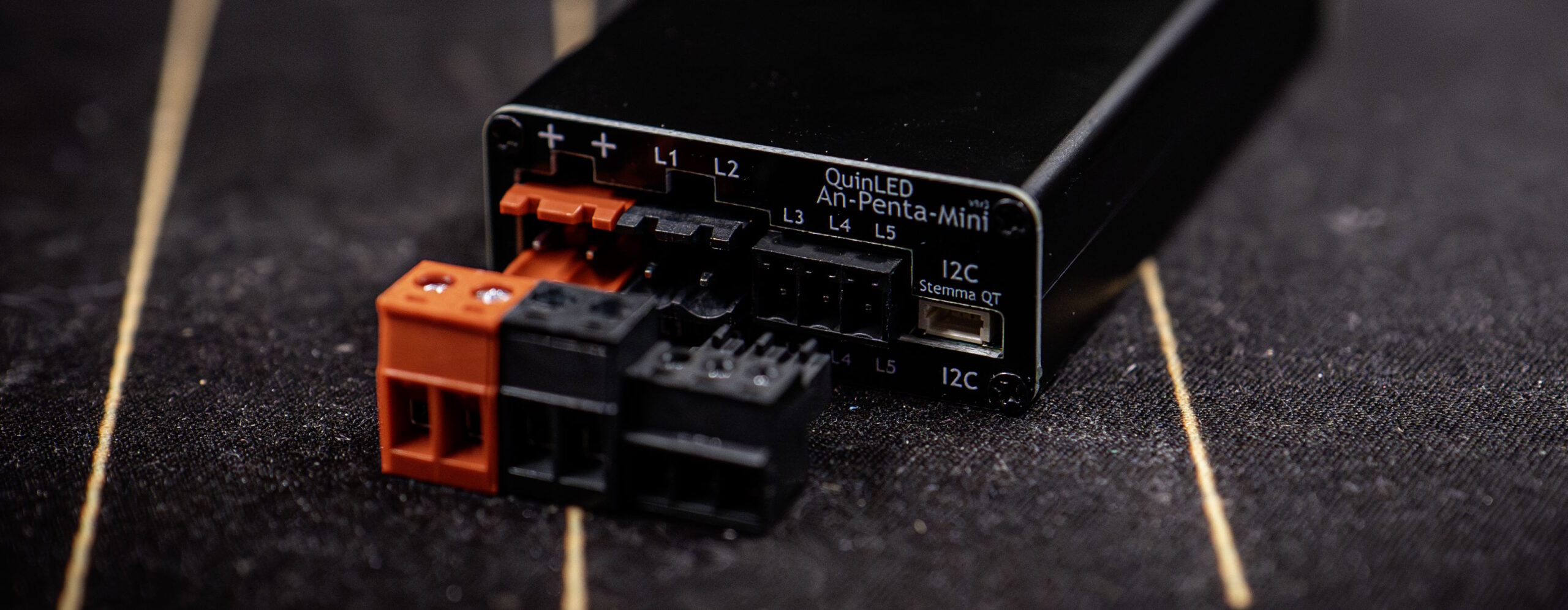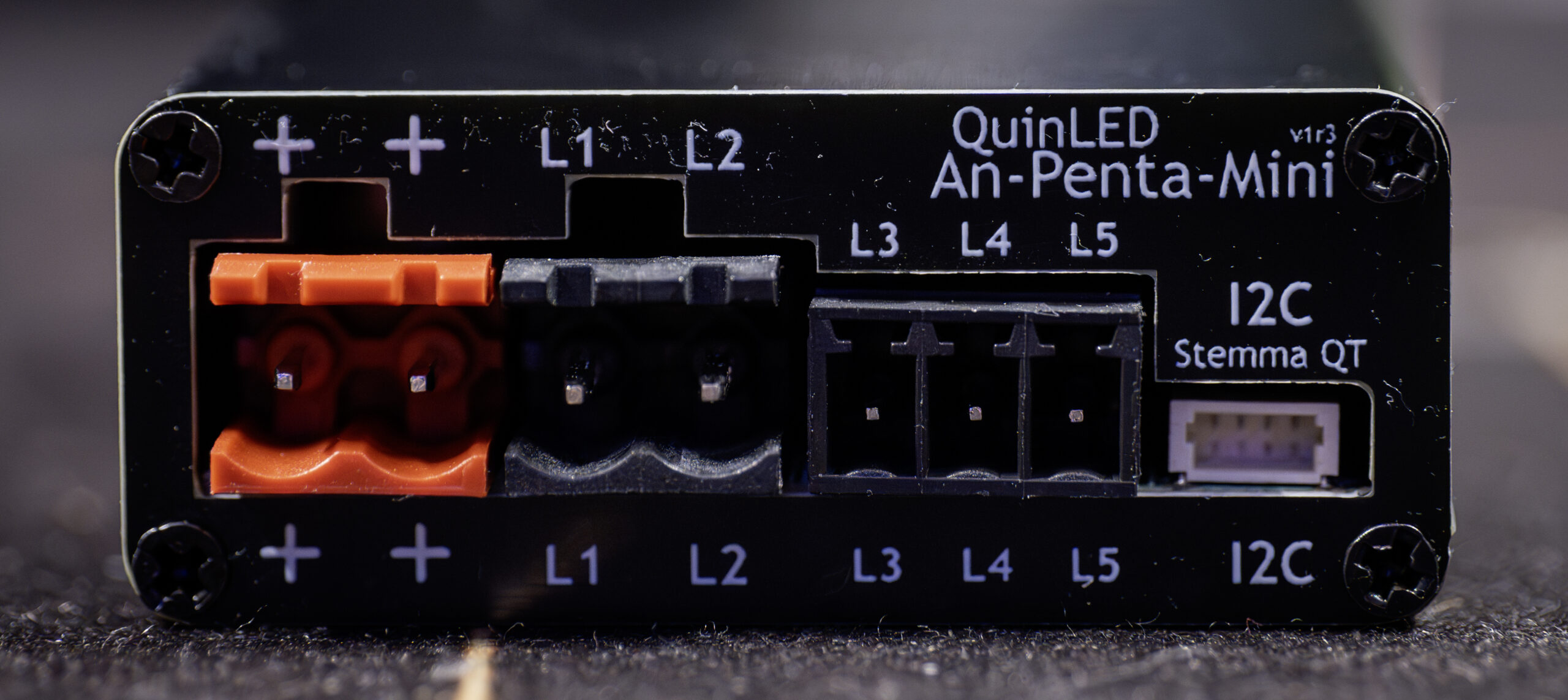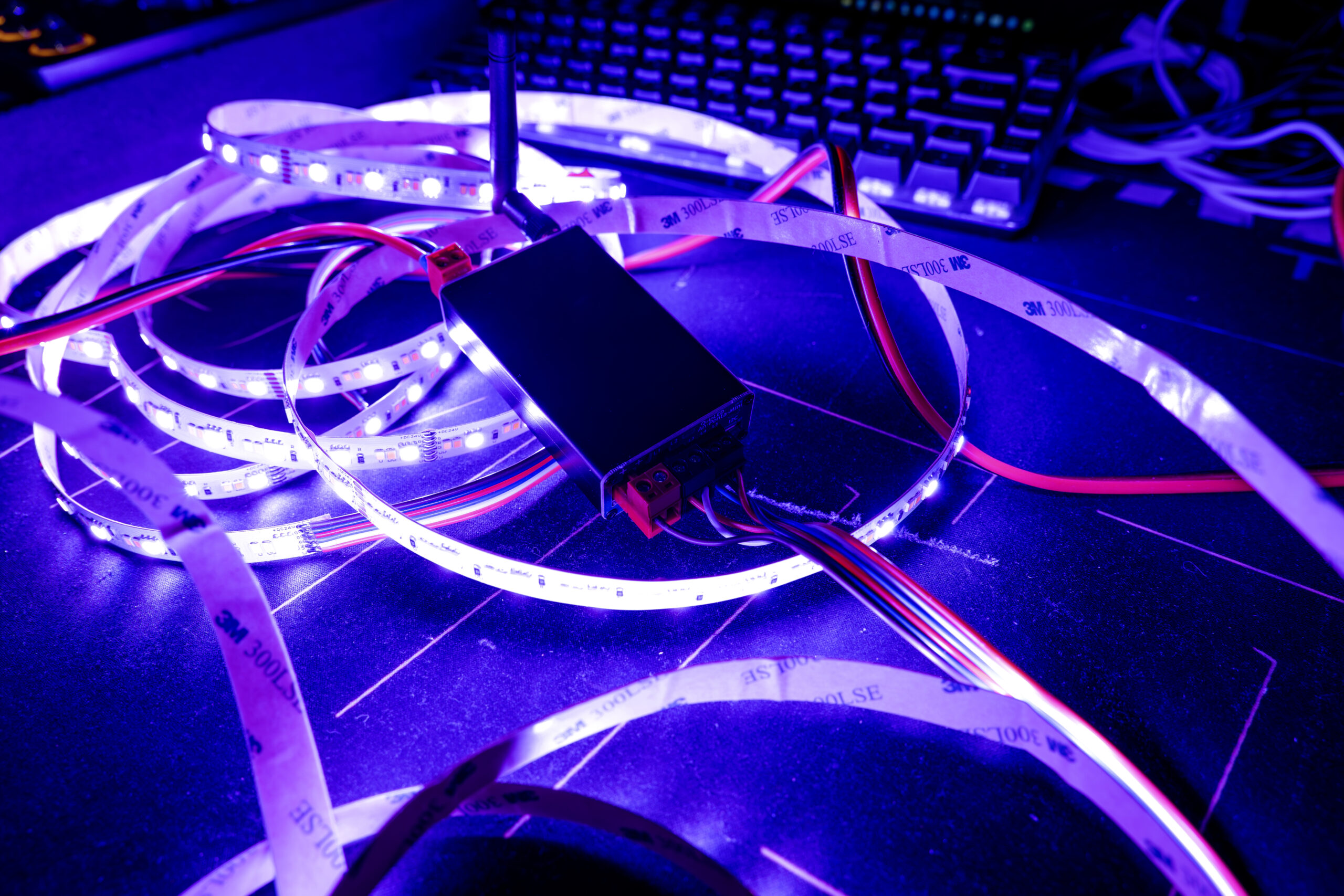QuinLED An-Penta-Mini Power Handling
Back to QuinLED An-Penta-Mini Index
When hooking up LED strip to your dimmer power handling is an important factor to take into account in your design. The QuinLED An-Penta dimmers have built in fuses for extra safety and this needs to be taken into account when hooking up your LED strip.
The QuinLED An-Penta-Mini comes equipped with 2x 5A output channels. This means the total power the board is able to handle is up to 10A in total for most situations (please keep this reading this article though!).
When hooking up your LED strip (in whatever configuration you need the 5 channels) you can mix and match the positive wires of the LED strip between the 2x red positive out channels that are available. Please do some estimated calculations how to divide the positive wires (if you are using multiple strips) between the available terminals and with that, power.
Voltage supported
The QuinLED An-Penta-Mini supports 12v, 24v, 36v and 48v LED strips or other form of LEDs that can be controlled with Constant Voltage PWM regulation.
Positive side – Divide LEDs over output fuses
If you for instance have 5x white LED strip it’s advised to divide the 5x positive wires based on power draw or easier to do, based on length (if all other specifications are the same). Thus if say you have 14.4w watt per meter LED strip running at 24v, and you want to hook up a total of 10m of LED strip divided over 1 strip of 4m, 2 strip of 2m and 2 strips of 1m. Looking at it from a wattage and Amp standpoint this would look like:
What does each strip use?
- 4m = 14.4w x 4 = 57,6w / 24v = 2,4A
- 2m = 14.4w x 2 = 28,8w / 24v = 1,2A
- 1m = 14.4w x 1 = 14,4w / 24v = 0,6A
Checking total Amps
- 1x 2,4A + 2x 1,2A + 2x 0,6A = 6A
Divided over outputs
- Output 1: 1x 2,4A + 1x 1,2A = 3,6A total
- Output 2: 1x 1,2A + 2x 0,6A = 2,4A total
I know that might look slightly complicated when first looking at it, to simplify it, if you are hooking up the same type of LED strip to all outputs you can just look at the lengths you are hooking up and try to hook up the same length wise to both positive outputs.
Negative (PWM) side – Per channel available power
The dimming output ports on the QuinLED An-Penta-Mini have their own limits, next to the positive output limits discussed above. These channels are configured differently hardware wise which also gives them a different advised current rating. The QuinLED An-Penta-Mini comes with 2x “medium” power channels and 3x “low” power channels.
- “medium” power channel recommended max 5A
- “low” power channel recommended max 3A
Other boards in the QuinLED An-Penta Line-up feature more or even “high” power channels if your situation requires those.
Just like above on the positive side, please divide your LED strips over the channels with their given expected power draw. You are allowed to run multiple strips off the same channel as long as you stay below the max total limit for that channel.
Isn’t 2x 5A low? Can I combine?
5A at 24v is still 120w which is normally enough to run even a 5m/16ft of fairly high power 19.2w/m strip! The An-Penta-Mini gives you 2x 5A so you could potentially even run 10m!
Because of the way fuses operate you cannot combine 2 fuses on a single injection but you are allowed to “combine” fuses when connected to different parts of the LED strip when doing power injection.
But, even though that’s possible on the positive size, you run into the max limit of the individual output channels. If you wish to run 10m continuous of that 19.2w/m strip with power injection at the front and end for instance and thus needing up to 8A from a single channel I’d advised to upgrade to a QuinLED An-Penta-Plus which has 10A “high” power output channels! The same goes for running long stretches of 28.8w/m or even the ultra bright 38.4w/m strips.
High PWM frequency = extra heat
The above limits (especially for the channel side) are set for a PWM frequency of ~20kHz. If you have the desire to run your PWM frequency (much) higher this will increase the switches losses for the MOSFETs doing the PWM dimming. This in turn results in extra generated heat. It’s best to downrate channel limits a little bit when increasing frequency. Sadly I can’t give you an exact figure, doubling frequency doesn’t double the heat but if say you went from ~20kHz to ~120kHz this would increase MOSFET heat to such a degree that I would downrate each channel 1 tier. So a “medium” power channel goes from 5A to a “low” power channel tier and thus 3A.
If you have a specific application please reach out to us on Discord to see if what you are looking to do has already been tried/tested or not!



